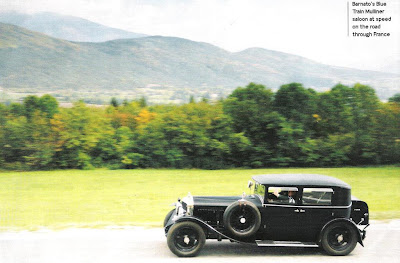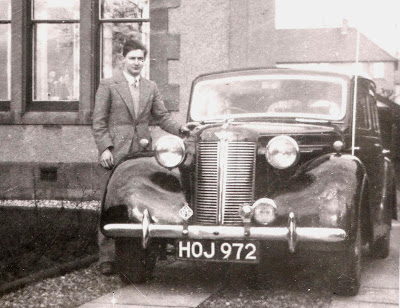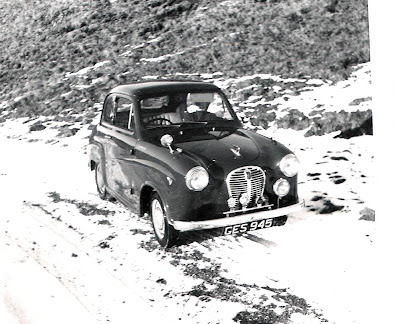Twenty-one years ago Rolls-Royces were still made in Crewe. They were a decade away from fundamental change. Yet their dignity seemed unshakeable as this motoring column from 17 June 1990 shows. And 'personal imports' to beat Car Tax and VAT was still newsworthy.
SUNDAY TIMES: Motoring, Eric Dymock
ROLLS-ROYCE SILVER SPIRIT II
Upwards of a thousand Rolls-Royces are converging on Castle Ashby in Northamptonshire today for the Rolls-Royce Enthusiasts' Club Annual Rally. It will be a meeting of hearts and minds as well as cars. Rolls-Royces are as close to Britain's soul as Big Ben or Land of Hope and Glory, yet as with other pillars of the establishment, it is easy to expect too much of them.
Dignified and regal, beautifully made and long-lasting, Rolls-Royces are as imposing as ever they were. You are more likely to be taken for a pop star at the wheel of one nowadays than a Member of the House of Lords. They tend to be bought more by 'new' money than by the old aristocracy who seem to be happier in Range Rovers and green wellies.
Adjusting one's expectations means not assuming a Rolls-Royce will handle like a Mercedes-Benz, nor be as quiet as one of the new Japanese luxury cars. It means driving them in a fitting manner, not too fast, and avoiding harsh braking or acceleration. The older parts of the suspension were not designed to avoid the diving and leaping that go with clumsy driving.
Rolls-Royce chauffeurs like Rolls-Royce cars are expected to keep their composure at all times. At the chauffeurs' school they are instructed how to open a door, then shut it with a satisfying clunk, like the door of an old First Class railway carriage, as the passengers sink into the Connolly-leather chairs, kick their shoes off, and curl their toes into the shaggy carpet.
Rolls-Royce's tradition of naming cars after ghosts began in 1907, when Claude Johnson, responsible for the creation of the marque as much as the two euphonious partners, had their thirteenth 40/50 finished in aluminium paint, and the carriage lamps and fittings silver-plated. It was named The Silver Ghost
The latest Silver Spirit is less ethereally quiet. It is probably noisier than some of the graceful old cars gathering at Castle Ashby, the difference is that it does 120mph, and accelerates to 60mph in a vigorous 10 seconds.
Its worst shortcoming is the tiresome hum from the air intake of the 6.75 litre V-8 engine which would pass unnoticed in a Sierra or a Cavalier, but as in the tale of the princess and the pea, quite spoils the cushioned luxury of a car that costs £85,609, and does between 12 and 15mpg. With a little effort you feel the fuel consumption could reach single figures.
The heavy thirst is the result of the blunt aerodynamics and the car's weight of 2350kg (5180lb, 46cwt). The controls are all light, but at seventeen and a quarter feet (5.3metres) it is a large car. The ride is now extremely good, with the new adaptive ride control which senses speed, steering, and the disturbance made by road bumps. The sensors then stiffen or slacken the springing within milliseconds, making this the best-riding and best-handling Silver Spirit yet.
Body roll on corners is firmly checked, and the old floaty motion has gone.
The interior of the Silver Spirit is of matchless quality, with further refinements to the two-tier air conditioning system. Unlike those of BMW and Mercedes-Benz, it divides horizontally, giving the occupants the choice of warm feet and a cool head as opposed to a cool driver and a warm passenger.
There is usually so much noise in a car that the quality of an elaborate stereo system is squandered. The Silver Spirit is quiet enough for pop stars to appreciate its ten speakers (two tweeters in the demister panel, mid-range and bass units in the front doors and tweeter and mid-range units in the rear doors) and, for those of their lordships who still have them, to hear Today in Parliament in perfect peace.
ENDS 661w
SUNDAY TIMES: Motoring, Eric Dymock
ROLLS-ROYCE, CREWE
Rolls-Royce has at last had to concede that machines make cars better than people can. Sir Henry Royce, whose engineering credo was that, "There is no safe way of judging anything except by experiment," would probably have agreed. He would go to any lengths to achieve excellence and had he known about it, he would have embraced computer-controlled machining with enthusiasm.
Changing the habits of a lifetime has not come easily. The old wartime factory at Crewe still has machinery, which still looks as though it made Merlin engines for Battle of Britain Hurricanes and Spitfires. They did, and are gradually being replaced by automatic cutters and drillers to turn out better components than the most skilled craftsman.
Rolls-Royce offers the production engineer a singular challenge. It is relatively easy for robots to turn out thousands of identical parts, but Rolls-Royce made only 3,243 cars last year, just under 70 every working week, so it does not want thousands of anything very much. What it does want is seventy or so axle casings, or cylinder blocks, or exhaust manifolds machined to a consistent accuracy that befits the car.
This could no longer be accomplished with the relics of industrial archaeology on which Rolls-Royce Motors had to rely following the receivership of 1971. Like Ferrari, Rolls-Royce has had to adapt to changing circumstances, which meant commissioning a highly automated paint plant a year ago, and bringing in sophisticated new machinery, the latest of which was brought into operation only last week.
Unlike Ferrari, in which Fiat has invested heavily, Rolls-Royce has had to generate its own resources. Profits have gone up from £14.1 million in 1984 to nearly £25 million last year. Sales are up 18 per cent world wide, the Pacific basin is doing well with sales in Japan up, North America holding its own, and the UK up by over 8 per cent.
Just over half the cars made by the company are Bentleys, and when the new model arrives by the mid-90s, the Rolls-Royce and the Bentley ranges will separate for the first time since 1945. The pre-war "Silent Sports Car" will have an identity of its own again, with a separate body style.
More pressing however is a new engine to replace the thirty year old V8, which is neither as smooth nor as efficient as a Rolls-Royce ought to be. Vickers, Rolls-Royce's parent now owns Cosworth Engineering which is not only an outstanding manufacturer of racing power units, but also notable in the production engineering of engines.
Among Cosworth's notable achievements was successfully designing and producing the 16-valve heads for the outstanding Mercedes-Benz 190 2.3-16, in an astonishingly short time. Rolls-Royce is fully extended making cars - it makes most of its own components down to the Spirit of Ecstasy on the radiator shell. Cosworth, rich in talent, would not find it difficult to design and engineer a new power unit adaptable for a 1995 range of Bentley sports cars and Rolls-Royce limousines.
Meanwhile the crafts at Crewe which even the cleverest robots could not replace, continue to thrive. Ferrari lost none of its cachet through installing modern production methods and neither will Rolls-Royce. Ferrari quality and reliability has improved and so will Rolls-Royce's. The irreplaceable features, the sumptuous leather and the carefully-grained woodwork which no manufacturer in the world does as well, will give the cars their own distinctive character for generations to come.
ENDS 600w
SUNDAY TIMES: Motoring, Eric Dymock
Mrs Alberto Pirelli will flag off 125 pre-1966 cars taking part in the 2,000 mile Pirelli Classic Marathon from Tower Bridge at 0800 today. The third annual Marathon which commemorates the old Alpine Rally travels through six countries in seven days, finishing in Cortina Italy, on Saturday.
The 15 special tests, start at Lydden Hill, Kent at 11.00. Spectators will be admitted to a slalom-style event which will decide the first day's leaders before the cavalcade sets sail for the first overnight stop at Ypres, in Belgium.
Stirling Moss has declared himself fit to drive an MGB following his recent motorcycle accident but has not yet discarded both his crutches. Victor Gauntlett has withdrawn his £200,000 Austin-Healey which leaves Indianapolis star Bobby Unser's rather special Jaguar E-Type as probably the most valuable car in the event. Together with all the other precious classics, the Jaguar will be put to some strenuous tests such as a timed climb of the famous Stelvio Pass, Italy's highest Alpine road, nine miles with 48 hairpin bends, which will be specially closed for the occasion.
ENDS 195w
SUNDAY TIMES: Motoring, Eric Dymock
BMW SAYS EURO-PRICES BUNK
Despite a recent rise of 3.3 per cent, BMW claims that the prices of its 3-Series cars are much the same in the UK as they are in the rest of Europe. Taking the prices of extra equipment into account, optional in Germany but not always optional on the UK market, personal imports cost the customer more.
BMW allowed £300 to cover petrol, hotels, and ferry fares and local taxes were taken into account. No allowance was made for any administrative expenses, but BMW calculates that on an exchange rate of Dm2.8 to the pound the costs are as follows:
personal import UK retail extra cost of personal import
316i £12,525 £12,425 £100
320i £15,638 £15,550 £ 88
325i £19,179 £19,175 £ 4
The more expensive the BMW, the more BMW says you save by buying it in the UK.
ENDS 161w




















































